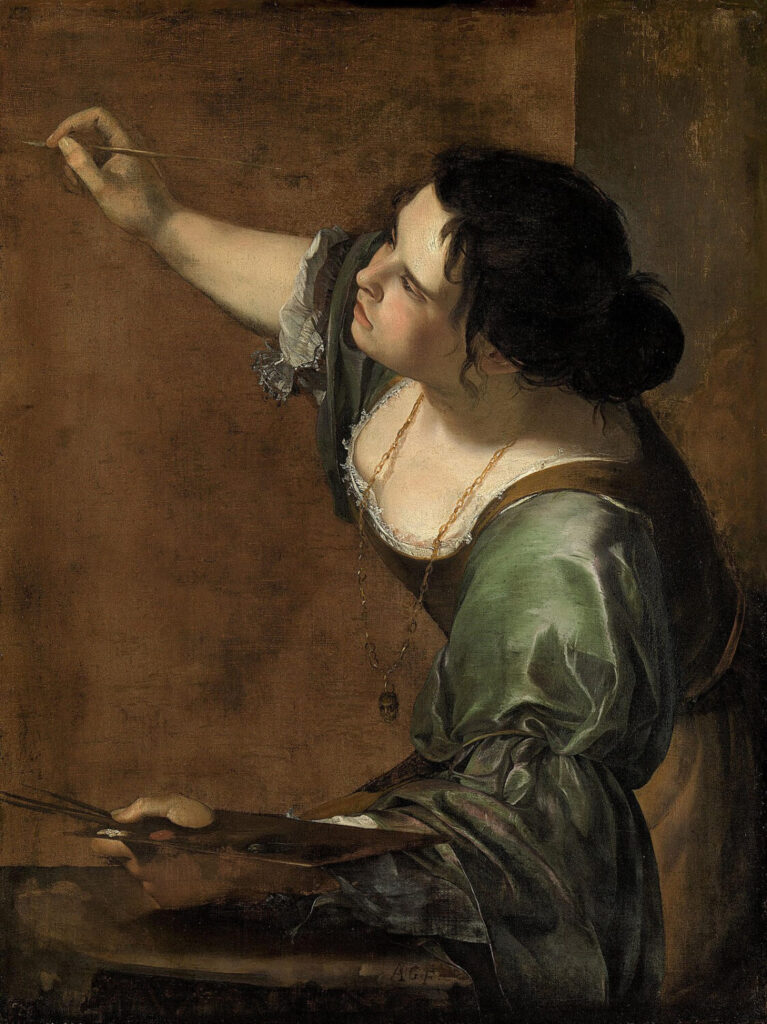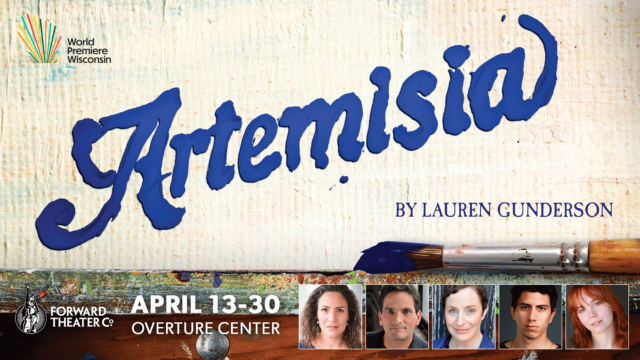Special promotional content provided by Forward Theater Company
By Mike Fischer
Playwright Lauren Gunderson’s portrait of Artemisia Gentileschi in her stunning world premiere play – being staged by Forward Theater between April 13-30 – contains so many multitudes that Gunderson needs two talented actors to tell her story.
We’ll see Gentileschi as mother and daughter, painter and lover, savvy self-promoter and restless adventurer – an artist whose daring use of chiaroscuro makes clear how fully she understood that one is always both light and dark and who, as she tells us in this play, intuitively grasped that “joy and pain” together “make good art,” while every face tells many stories.
It’s therefore no surprise that Gentileschi specialized in painting strong, multi-dimensioned women, repeatedly reminding us that each of them was so much more than the world had ever seen in paintings of them made by male artists.
Susanna and Judith, Catherine and Cleopatra, Esther and Mary Magdalene and Jael.
And, yes, Gentileschi herself – in the justly acclaimed self-portraits and in everything else. Gentileschi made a “practice of including her own features in portraits of heroines,” writes Oliver Tostmann in the catalogue to the outstanding exhibit last year in Detroit of work by Gentileschi and 17 other women painting in Italy between 1500 and 1800.
Hence Gentileschi’s use of mirrors when creating masterpieces like Self-Portrait as the Allegory of Painting; they gave Gentileschi the opportunity to reflect more fully on herself, in an era when people who’d long been taught to imagine themselves as types were first developing the sense of interiorized self-recognition allowing them to see themselves as individuals.
“There are pieces of me in every painting,” Gentileschi tells us in Gunderson’s play. “That’s why I can paint them,” she adds.

The Two Gs
That’s true of every artist, which tells you a lot about the inspiring artist who made this play.
Like Gentileschi, Gunderson continually helps us see anew women who, as Gentileschi puts it in this play, are “ferocious and strong and smart”; both artists reclaim older and more cramped versions of history to write herstory.
Gunderson has singlehandedly changed how we see the likes of Ada Lovelace and Emilie du Châtelet, Marie Curie and Jeannette Rankin, Olympe de Gouges and the Henrietta Swan Leavitt who featured in Forward’s unforgettable production of Silent Sky (2015), through which Forward Artistic Director Jen Uphoff Gray played an integral role in awakening Wisconsin to Gunderson.
“I collect faces,” Gentileschi tells us at the beginning of the play. Gunderson could have been speaking about herself.
The similarities between these two exciting artists don’t stop there.
“Artemisia Gentileschi’s remarkable talent,” writes Tostmann in comments on Gentileschi’s Mary Magdalen in Ecstasy, “lies in her ability to infuse her subjects with drama and passion. She often shows famous women imbued with great emotional depth, psychological nuance, and physical force.”
Naysayers found all of this emotion to be too much (even as they praised it in near male contemporaries of Gentileschi’s like Caravaggio). It’s a criticism that’s also been lobbed at Gunderson, who’s been accused of being too theatrical and too emotional. Too populist. Too melodramatic. Too – gasp! – entertaining.
“I’m a too-much playwright,” Gunderson once stated in an interview. She wasn’t making an admission, but a declaration – in rousing affirmation of plays that not only consistently reclaim and remake the past but also know how to have fun, allowing us to think and feel while reaching beyond the suffocating naturalism of our narrowly tailored blueprint lives.

How to Be Both
Gentileschi and Gunderson’s investment in more generous and expansive storytelling is inseparable from their commitment to liberation. On behalf of the women who are their subjects. On behalf of their art and why it matters. On behalf of themselves and how they are seen.
And on behalf of each of us and how we see the world.
Painting, thinks Renaissance Italian artist Francesco del Cossa in Ali Smith’s How to Be Both (2014), “unchains the eyes and the lives of those who see it and gives them a moment of freedom, from its world and from their world both.”
In Smith’s brilliant novel, Cossa is imagined as a woman who, living 200 years before Gentileschi and with comparatively less freedom, disguises herself as a man so that she can paint.
Much like Gentileschi and Gunderson, Smith has spent her Nobel-worthy career reclaiming space for creative and marginalized women, centering them in similarly playful stories while joining Gentileschi and Gunderson in her conviction that every story can be told from multiple perspectives.
In How to Be Both, Cossa learns “how to tell a story, but tell it more than one way at once, and tell another underneath it up-rising through the skin of it.” “Painting,” Cossa muses, “is a matter of double knowledge.”
In Artemisia, Gentileschi learns how to speak the truth but tell it slant, by invoking mythological and historical figures to paint the self-portrait of herself as an artist, living in a man’s world but daring to make it her own.
Yes, Gunderson’s play takes account of the various men who tried to define who Gentileschi was and how she’d be remembered. But Artemisia ultimately leaves that confining context in the dust to paint a portrait in which it’s Gentileschi herself, like the women in so many of her paintings, who has taken control of the narrative.
The same goes double for Gunderson, in relation to Gentileschi and the many other heroines populating an increasingly large and impressive body of work, which will go down as one of the great chapters in the annals of American theater history.
Sure, each of Gunderson’s heroines exists in her own right, as vividly realized individuals with their own stories to tell. But they also collectively give us the portrait of an artist – ferocious and strong and smart – painting a richer and more textured portrait of women and history as well as theater and ourselves, one play at a time.
For more information regarding and tickets to Artemisia, visit https://forwardtheater.com/show/artemisia.




























